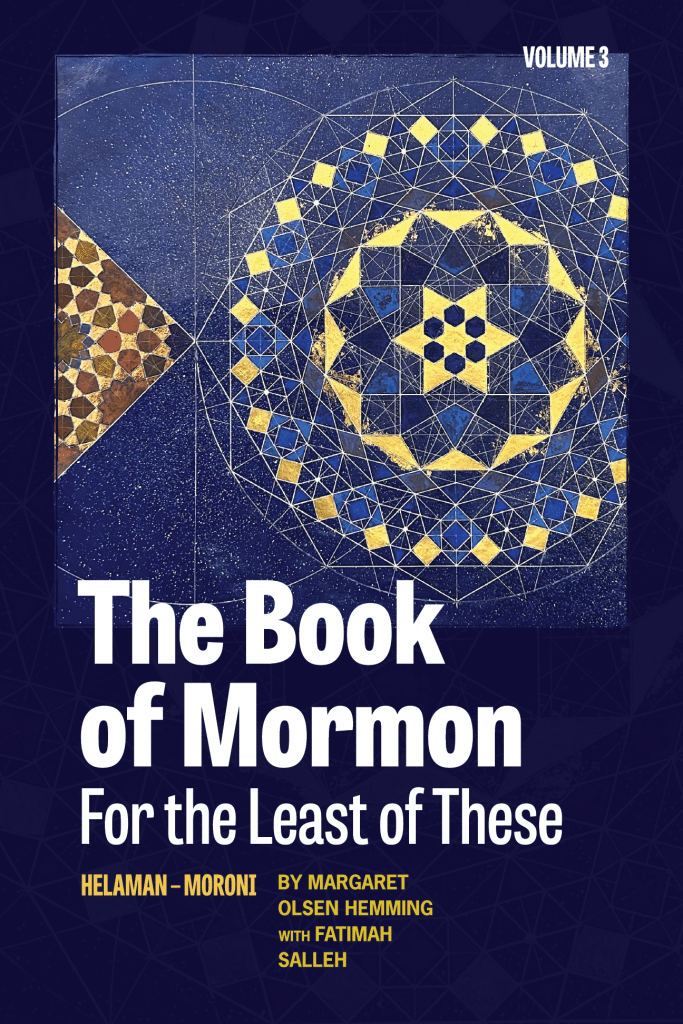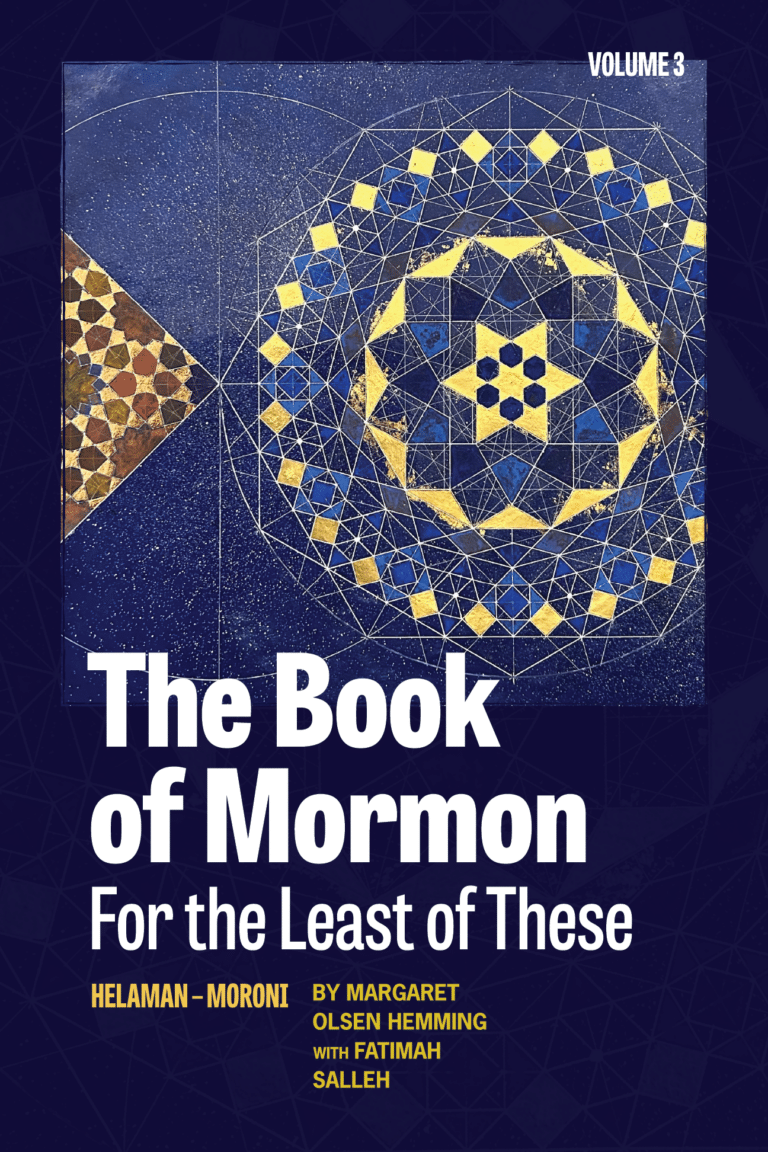The third and final volume of The Book of Mormon for the Least of These series by Margaret Olsen Hemming and Fatimah Salleh — a verse-by-verse commentary on the Book of Mormon rooted in liberation theology — is here. And it is a triumph.
This book published with BCC Press, and the series as a whole, has revolutionized my feelings about the Book of Mormon. Olsen Hemming and Salleh have shown that the social justice issues that I care about — such as combating racism, sexism, inequality, as well as tackling subjects like environmental stewardship, non-violent resistance, the refugee crisis, and building beloved community — are as important now as they are in the Book of Mormon. Olsen Hemming and Salleh’s theology and interpretations burst open my well-trod understandings of these familiar verses and restored a love for our sacred text that I never thought I’d feel in quite the same way again. I’m not alone. The blurbs for this volume by Joseph Spencer, Elizabeth Fenton, and Alice Faulkner Burch, much like many of the other stunning blurbs on prior books in the series, are staggering.
Trying to summarize or capture the power of this book feels impossible. So instead, I’ll share a few quotes from the writers themselves:
“The Book of Mormon deserves a struggle. It warrants the most challenging questions we can throw at it. This book attempts to ask those difficult questions. It centers those who have stood on the margins of society and then asks, “What does this text have to say about oppression? What does it say about genocide, bigotry, environmental destruction, property, and inequality? What can it offer a world that is broken, full of hatred and unfettered grief” (ix-x)?
. . . those who say they are “Nephites” are merely performing an identity, something that will pass away. Who it covers and who can claim it has changed before and it can change again. They are, as the writer James Baldwin devastatingly described, like people who ‘think they are white,’ not realizing these distinctions are fabrications. Whiteness, or Nephite-ness, is not a real identity. It is a deliberately created and chosen social construction” (48).
[This book] has never been more urgent, timely, relevant, and needed.
People often reflect on the peculiarity that 4 Nephi only offers these few vague verses about such a critical period of the Book of Mormon. Many readers wish for a more systematic elaboration of how to create such a community. A book that offers specific descriptions of battle strategy might also give exact directions to how to create Zion. There may be a very good reason for this. The book offers clear principles and values but allows individuals and communities to fashion their own particular way of following them . . . the text gives us a higher law, closer to Jesus’ two great commandments of loving God and our neighbor. By refusing to give a handbook of instructions, the text pushes readers toward spiritual maturity” (118-119).
An especially exciting development about this third volume is the inclusion of an index that connects all three volumes. With the final volume complete, all of the books are now grouped by topic for easy reference. The series as a whole has never been stronger or more rigorous while also remaining readable and accessible to anyone.
With the Come Follow Me year focusing on the Book of Mormon in 2024, this series feels like an essential companion. This is the book I want to see in people’s hands as they shuffle to and from the Sunday school room after sacrament meeting, the book I want to see on the shelves of homes when people sit down for scripture study, the book I wanted to see marked to high heaven like a leather-bound quad. To facilitate meaningful conversations with others about these issues, I highly recommend sharing this book — and this now completed series — far and wide.
The Book of Mormon for the Least of These has never been more urgent, timely, relevant, and needed. The authors’ love, passion, dedication, and commitment shine through on every page. This book changed me, and I’m so glad I let it into my life and heart. I’ll be returning to it again and again.





